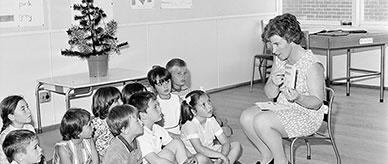


Transcript
[Heading:] ARE YOU WORKING FOR TOKIO?
Every time you pass on a rumour you are helping the enemy. Gossip undermines morale. Japan WANTS you to spread sensational chatter: Your country's safety demands that you guard your tongue.
[Subheading:] Gossip is Sabotage
A STILL TONGUE MAKES A GOOD CITIZEN
About this record
This is a black-and-white poster with a message for the Australian public about the danger of spreading information about Australia's war movements that could be heard by Japanese spies. The poster has the heading 'ARE YOU WORKING FOR TOKIO?' Underneath is the text 'Every time you pass on a rumour you are helping the enemy. Gossip undermines morale. Japan WANTS you to spread sensational chatter: Your country's safety demands that you guard your tongue. Gossip is Sabotage. A STILL TONGUE MAKES A GOOD CITIZEN'.
Educational value
- Is an example of the use of a poster to deliver war–related messages from the Australian Government to its citizens the Second during World War (1939–45) – Australia joined the war in 1939, declaring war on Germany; in 1941 it declared war on Japan.
- Was created during the second phase of Australia's engagement with the war, between 1942 and 1945, when the main enemy was Japan – while the poster is not dated, it is likely to have been produced during this period.
- Was part of an extensive campaign by the Australian Government that warned against idle talk or gossip – during the war the government had extensive powers of censorship over radio broadcasts and films, as well as newspapers and other forms of print media, in the national interest.
- Suggests how close the war was to Australian shores – in 1942, for the first time since colonisation, the Australian mainland came under direct attack when Japanese aircraft bombed towns in northwestern Australia, and Japanese midget submarines attacked Sydney Harbour.
- Promotes the fear within the community that spies might indeed be operating in Australia – while the fear of giving information to spies was legitimate, propaganda such as this was also aimed at keeping Australian citizens on guard and making sure they did not become complacent about the war effort.
- Reveals the Australian Government's desire to maintain morale by stamping out defeatist talk – as the war dragged on, people became disheartened by the austerity and the sacrifices they were continually being asked to make; one purpose of the poster is to label discontent and war–weariness as unpatriotic.
- Uses text but no images – while it is simple and economical to produce, a poster that uses text alone does not have the same level of emotive power as one that includes images.
- Appeals to Australian nationalism – the phrases 'your country's safety' and 'good citizen' remind the audience of their duty to their country.
- Shows an example of the spelling of Japan's capital as 'Tokio' – while we use the spelling 'Tokyo' today, this archaic spelling was commonly used throughout the war by foreign countries and is still found in languages such as Dutch, Finnish, German and Spanish.
- Is an example of the work of the Commonwealth Advertising Division – this was set up in 1941 within the Department of Information to communicate government messages to the Australian home front.
Acknowledgments
Learning resource text © Education Services Australia Limited and the National Archives of Australia 2010.
Related themes
Need help with your research?
Learn how to interpret primary sources, use our collection and more.



